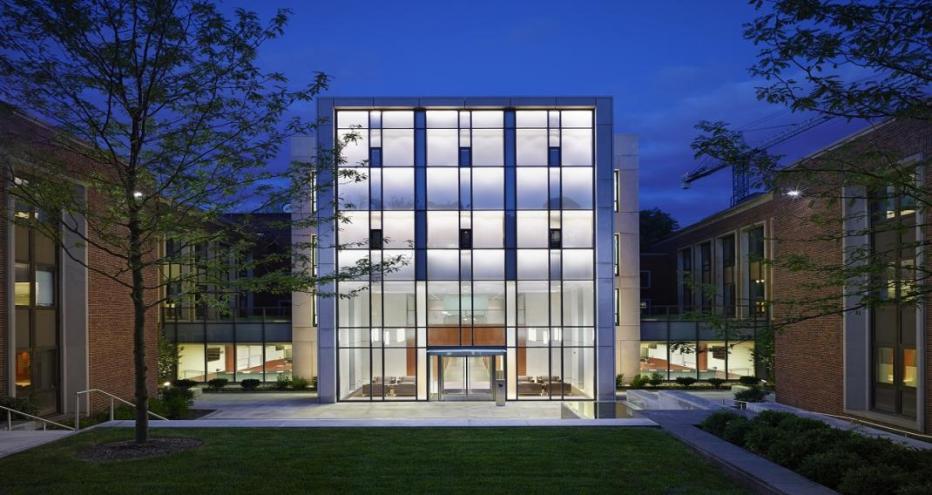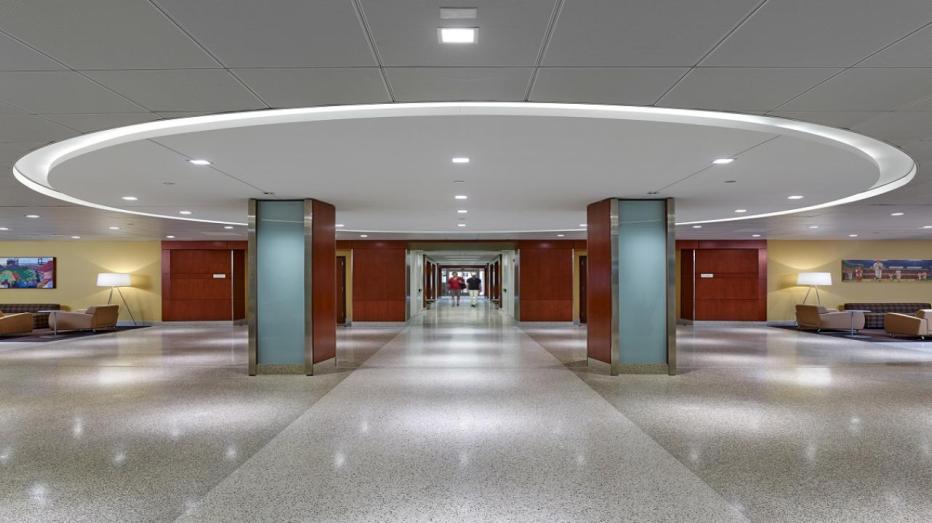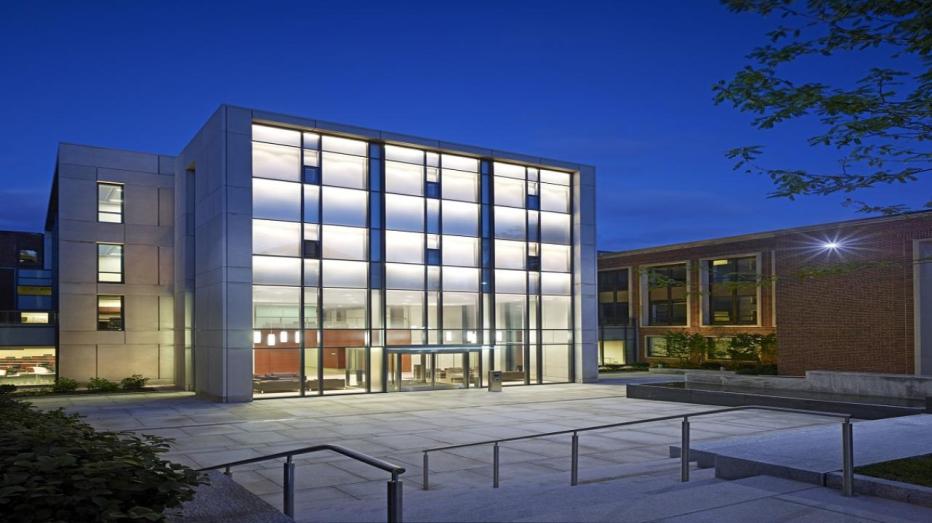
Steinberg-Dietrich Hall, UPenn Wharton School of Business
Recent growth in The Wharton School of Business programs at the University of Pennsylvania created a strong need for additional facilities for both students and faculty. Jacobs was commissioned to provide architectural, interior design, and engineering services.
Our design is sensitive to its context with an aesthetic that projects an image of a modern, world-class education center. The new addition creates a presence and an environment to attract both students and faculty.

Steinberg-Dietrich Hall, UPenn Wharton School of Business
-
31.3
square foot renovation of one of the first buildings added to the UPenn campus following World War II
-
320
seat lecture hall space, faculty offices, new green roofs and open center zones accommodating faculty lounges and specific

Steinberg-Dietrich Hall, UPenn Wharton School of Business
Inside the fresh Steinberg Hall - Deitrich Hall
Originally designed by McKim, Mead &White Architects in 1952, the existing building had become technologically and pedagogically outdated. The new addition is situated between two existing wings.
This new addition, along with the renovation of the existing building, reinforces Wharton’s reputation as the originator and leader of business higher education, as well as helps to create a presence and an environment that reinforces Wharton’s ability to attract both students and faculty and to remain at the forefront of higher education.
The client requested that this intervention be sensitive to its context with an aesthetic that projects an image of a modern, world-class education center.
Programmatically, the 30,000-square-foot addition/renovation is anchored by twin150-seat tiered lecture halls with three floors of faculty offices and support spaces above. The project was completed in two phases; ground floor lecture halls opened in January 2013 and faculty offices in August 2013.
Many massing and character options were studied during the course of the design, ranging from pristine, minimalist glass boxes, to more contextually referential, albeit modern, forms and surfaces. The complete building is the synthesis of that effort that adds to the historical structure without overwhelming it as well as engaging it with sympathetic proportions and materiality.
The new entry is a highly transparent to-story space. Limestone cladding and granite pavers extend from the exterior into the interior and a wood portal with slight inflection marks the entry and establishes a design motif carried throughout the project. Rhythms within the curtain wall facades revisit adjacent patterns, and limestone frames recall window surrounds. The new entry plaza engages 37th Street, providing not only a newly defined awareness of the building’s renewal but affording a place of gathering for the UPenn community. A faculty lounge is perched above the portal and creates a visual connection between students and faculty while offering views of the new plaza. The granite-surfaced plaza includes simple areas of grass and a granite-clad still reflecting pool.
The primary program elements on the ground floor are the lecture halls. Identical in size and configuration, these tiered spaces accommodate the largest classes in the school (320-seats) and are designed to facilitate greater student-professor interaction. The new lecture halls capitalize on their perimeter location and allow natural light to permeate the rooms. Equipped with advanced communications technology, professors are able to teach courses offsite locations and interact with students via digital content on tablets and other mobile devices.
Directly adjacent to the new lecture halls is the renovated inner lobby. Located at the intersection of primary circulation, it serves as a central social hub. Informal lounge settings dispersed throughout the lobby provide spaces in which students can interact between scheduled courses. Terrazzo flooring with a simple pattern reinforces the building’s primary axis and an elliptical light cove anchors and centers the space. The building’s upper floors contain faculty offices along with the perimeter with views of new green roofs. The open center zone accommodates faculty lounges and specific departmental functions such as teaching assistant stations and open collaborative settings. At night the primary facade takes on a beacon-like appearance through the use of LED luminaires grazing an automated scrim system.
In 2017, we also provided interior design for the 1,300-square-foot Mack Institute for Innovation Management, located on the third floor of Steinberg Hall - Dietrich Hall. We defined the suite with a pair of branded entry doors, converted the open central area to a multi-purpose space, and created a sub-dividable conference room out of two offices extending the multi-purpose central office space. The renovation was completed successfully while keeping offices operational.














































